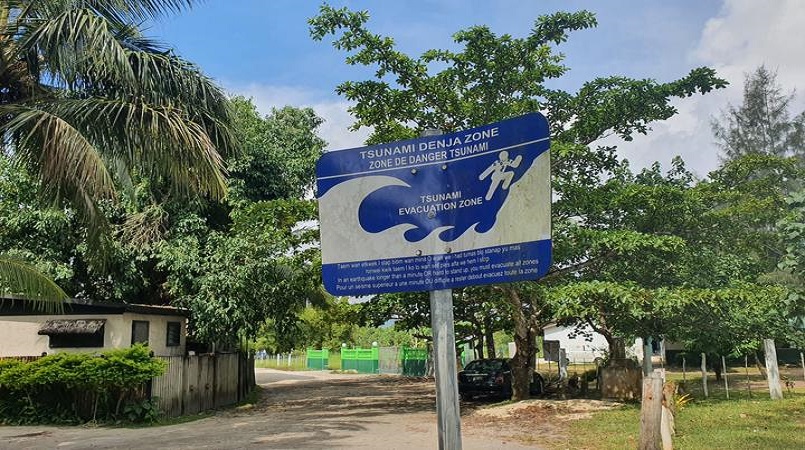
As we all have experienced during the months of February and early this month, March 2021, that the seismicity around the New Hydrides-Vanuatu trench particularly the central and the southern end of the trench has been very much active recently.
VMGD is working closely with NDMO to ensure that tsunami threat messages and cyclone warnings are issued based on the standard of procedures set by both entities. Both departments are responsible for the dissemination of early warning. An earthquake information bulletin is issued once an earthquake magnitude is 5.0 or more and will advise on whether the earthquake has caused some impacts. The Tsunami information will be issued if the earthquakes is local with magnitude is 7.0 or above, or when the earthquake is regional with magnitude 8.0 or above that can potentially generate a tsunami based on historical records. If the data received by the national tsunami warning center shows no significant threat, this will be the only Tsunami Information Bulletin issued about the potential tsunami. However if the analysis of observed data confirms that a tsunami is generated, subsequent advisories will be followed as advised by the Pacific Tsunami Warning Center.
Tsunami sirens have been placed within highly populated areas of Luganville and Port Vila to notify the public when a mass evacuation is required in an event of a tsunami. Tsunami siren trigger requires minimum time lag between the notifications of the trigger of a major Tsunami wave to the turning on of the siren. As a result, the equipment to turn on the tsunami siren in Vanuatu is installed within VMGD department. The tsunami sirens are only sounded when analysis of data collated by the VMGD during the Tsunami event shows risks of high impacts that warrants the officer on duty to turn on the siren for Port Vila and Luganville.
All information and alerts are then collated and then channelled to NDMO for dissemination through the Emergency Telecommunications Cluster (ETC) partners.
In recent events, the relevant telecommunications company contacts were not contactable because of the on-duty scheduling changes due to the impact of COVID-19 on their duty on call service delivery. The Office of the Government Chief Information Officer (OGCIO) attained immediate measures to address the matter same morning to have this SMS distribution issue fixed. In collaboration with OGCIO and ETC partners a better communication system for specific warning services is paramount, a multi-platform approach to the early warning system for all weather, climate, earthquake, volcano, and tsunami conditions.
For the latest regional tsunami early warning alerts from the M8.0 New Zealand Earthquake, the Pacific Tsunami Warning Center (PTWC) had issued series of Tsunami Threat Messages. VMGD as the tsunami focal point for the PTWC and national tsunami warning centre in Vanuatu has relayed the Tsunami Threat Messages from its Tsunami Desk to its stakeholders including the general public throughout Vanuatu through different medium:
1. VMGD’s website (https://www.vmgd.gov.vu/.../ind.../warnings/tsunami-adivsory)
2. VMGD’s Facebook page (
3. Tsunami priority email list which includes NDMO.
4. Tsunami SMS to Vodafone and Digicel via NDMO.
5. VMGD’s 116 Emergency line
6. Radio Vanuatu
7. WFSD direct line 22932 and VMGD Office line 24686.
While consistently and collaboratively conveying warning messages and response measures of tropical cyclones and Tsunami threat to general public in Vanuatu, VMGD and NDMO with their stakeholders will continue to work together to address their multiples challenges of multi-hazards Early warning systems and response with the support of their bilateral and multilateral partners . Members of the public and Leaders of the Republic of Vanuatu are encouraged to address their concern and queries formally on how VMGD and NDMO should perform their mandate through the Head of the Departments. Together we can improve service delivery in a more effective and efficient manner.
